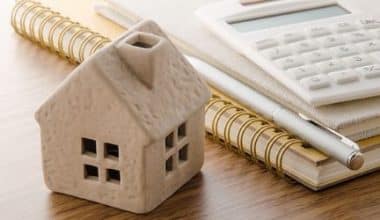A cheque is a payment arrangement between two individuals or organisations. So, when you write a cheque, you are agreeing to pay another person or group money that you owe them and asking your bank to make that payment. Here is some useful information on the use of cheques and how they are processed by financial institutions.
What Is A Cheque?
A cheque is a bill of exchange in which one party instructs the bank to transfer money to the bank account of another party. It is a negotiable instrument covered by the Negotiable Instruments Act of 1881. The drawer is the person who writes the cheque, the drawee is the bank that must transfer the monies, while the payee is the person whose name the cheque has been issued. A cheque can be issued against either a savings or a current account.
How Do Cheques Work?
A cheque is a bill of exchange or paper that guarantees a specific amount of money. It is printed for the drawing bank to give to an account holder (the payor) to utilise. The payor writes the cheque and gives it to the payee, who then takes it to their bank for cash or deposit into an account.
Cheques fundamentally serve as a means of instructing the bank to transfer funds from the payor’s account to the payee’s account.
Two or more parties can conduct a monetary transaction without utilising real currency by employing cheques. Instead, the amount stated on the cheque serves as a substitute for the equivalent amount in physical currency.
Cheques are often made against a checking account, but they can also be used to transfer funds from a savings or other type of account.
Cheques can be used to pay bills, make gifts, as well as transfer funds between two persons or companies. They are typically seen as a more secure method of transmitting money than cash, particularly when significant sums are involved. A third party cannot cash a misplaced or stolen cheque since the payee is the only one who can negotiate the cheque.
The Evolution of Cheques
Cheques have existed in some shape or another since ancient times. Many individuals believe that the ancient Romans utilised a form of cheque.
Modern cheques, as we know them today, were widespread in the twentieth century. Cheque usage increased dramatically in the 1950s as the cheque process was automated and computers were able to sort and clear cheques. Cheque cards, initially introduced in the 1960s, were the forerunners to today’s debit cards.
Credit and debit cards, as well as other kinds of electronic payment, have now surpassed cheques as the primary method of payment for the majority of products and services. Cheques are less frequent nowadays, but they are still used on occasion.
What Are the Main Characteristics of a Cheque?
A cheque is a written, unconditional order. The cheque is paid in cash. A cheque is written on a certain bank and is always payable on demand. The amount is always a specific quantity of money that is in one’s account and cannot be exceeded. This cash sum is to be paid to the individual named in the letter, order, or bearer. The maker’s signature is required on the exchequer.
Types Of Cheques
- Bearer Cheque: This form of cheque is made payable to the individual who submits it to the bank for payment. Anyone can cash it and there is no identification required.
- Order Cheque: An order cheque is solely payable to the individual listed on the cheque. Before depositing or cashing the cheque, the payee must endorse it by signing the back of it.
- A crossed cheque has two parallel lines across its face. This adds an extra layer of protection against fraud and theft.
- Post-Dated Cheque: A post-dated cheque has a future date on it and cannot be cashed until that date arrives. This form of cheque is typically used for future payments, such as rent or loan repayments.
- Traveller’s Cheque: A traveller’s cheque is a sort of cheque that can be used as payment when travelling. If lost or stolen, banks or other financial institutions can replace them.
- A self-cheque is a cheque written by the account holder to oneself.
Other Types Of Cheques
#1. Certified Cheque
A certified cheque confirms that the drawer’s account has sufficient funds to cover the amount of the cheque. In other words, the cheque is guaranteed not to bounce. To certify a cheque, it must be given to the bank on which it is drawn, at which point the bank will verify its legitimacy with the payor.
#2. Cashier’s Cheque
A cashier’s cheque is guaranteed by the banking institution and signed by a bank cashier, which means the bank is accountable for the monies. This sort of cheque is frequently required for significant transactions, like as purchasing a car or a house.
#3. Payroll Cheque
A payroll cheque, often known as a paycheck, is sent by a company to reimburse an employee for their job. Physical paychecks have given way in recent years to direct deposit systems and other types of electronic distribution.
Bounced Cheques
When someone writes a cheque for an amount greater than what is in their checking account, the cheque cannot be negotiated. This is referred to as a bounced cheque.
The cheque bounces because it cannot be processed because there are inadequate or non-sufficient funds (NSF) in the account (the two words are equivalent). A bounced cheque usually results in a penalty cost for the payor. In some situations, the payee is additionally charged a fee.
Other checking account fees may include a monthly service fee, a per-cheque fee (a charge for each check you write), a cheque printing fee, as well as a returned deposit item fee. When you deposit a cheque in your account and it bounces, you will be charged a returned deposit item cost.
Validity of a Cheque
A cheque is valid for three months following the date of issue (the date is printed on the upper right-hand corner of the cheque).
What is a Cheque Number and How Do I Find It?
A cheque number is a unique identification assigned to each cheque issued by a bank account holder. It aids in the tracking of cheques issued and cashed, as well as serving as a reference number for cheque-related operations.
The cheque number can be found near the bottom of the cheque, usually on the right-hand side. It is the series of digits written following the routing number, account number, and the name and location of the bank. The cheque number is often printed in magnetic ink and is machine-readable for speedier processing.
The Benefits and Drawbacks of Using a Cheque
Benefits
- It is more convenient and safer to take around than cash.
- It is a negotiable instrument that can be approved in favour of a third party.
- If they go missing, they can be easily found.
Drawbacks
- Because it is not legal tender money, payment via cheque may be rejected.
- Individuals who do not have bank accounts would be inconvenienced by the crossing of cheques.
- Depositing cheques into one’s account takes time and necessitates a visit to a bank branch.
How Do You Write a Cheque?
Here is everything you need to know about writing a cheque:
A cheque is divided into two parts:
- Writing the cheque, which includes the payee’s name, the amount, and the person issuing the cheque’s signature
- Recording the payment, which entails recording the transaction in both the cheque writer’s and the recipient’s accounts.
Writing the cheque
It is critical to ensure that a cheque is appropriately written in order to avoid it being dishonoured or refused by the bank. To write a cheque, complete these steps:
- Date the cheque “DD/MM/YYYY” and consider making it post-dated if necessary.
- Correctly record the payee’s name.
- Write the amount in words in the “Rupees” space, including the phrase “only” to prevent manipulation.
- Fill in the same amount in numerals in the designated box on the right side of the cheque.
- To avoid cancellation or invalidation, sign the cheque using the same signature you use for other banking transactions.
Recording the payment
It is critical to keep track of the specifics of the cheques you have made, including the payee and the amount paid. This can help you ensure that you have an accurate record of your financial activities and avoid any potential complications or confusion.
- Keep track of the details of each cheque you write, including the cheque number, date, payee, and amount.
- Use a cheque register book to record this information for each cheque you write.
- Include the cheque number, date, and amount in the register book, as well as a brief description of the payee.
- This can help you keep track of your cheques and keep an accurate record of your financial activities.
Do Banks Forgive Bounced Cheques?
On bounced cheques, banks have varied policies. The bank may incur overdraft or nonsufficient funds fees. Some banks may offer a grace period, such as 24 hours, during which you can deposit funds to avoid overdraft costs.
What Is the Difference Between a Certified and a Cashier’s Cheque?
Personal cheques are regarded less safe than certified and cashier’s cheques. Cashier’s checks are signed by banks and drawn against a bank’s account, whereas certified cheques are signed by an individual and drawn against a personal account. Both cheques are bank-guaranteed, making them more safe.
What is a Cheque in the Banking System?
A cheque is a negotiable instrument that instructs a financial institution to pay a specific amount in a specific currency from a specified transactional account held in the drawer’s name with that institution. Both the drawer and the payee may be natural beings or legal entities.
How Many Types of Cheques Are There?
There are various sorts of cheques, including bearer cheques, blank cheques, traveller cheques, crossed cheques, and others. Each cheque has its own distinct features and properties and can be used for a variety of purposes.
Can I Deposit a Cheque in any Bank?
Yes, different banks’ cheques can be deposited with another bank, and the mechanism banks use is called as CTS clearing. Cheque settlement times in local cities are limited to two days. And for other cities, cheques take 7 to 15 days (depending on whether they are urban or metro locations).
How Do I Withdraw Money From A Cheque?
Any teller can cash your cheque. Many banks will cash cheques without incurring a fee if you have an account with them. Some banks may require you to deposit the cheque rather than cash it.
How Do I Know If A Cheque Has Been Deposited?
If you have any doubts about whether the money you placed is usable, please contact your bank and inquire. You can also check your available balance at an ATM or by visiting your bank’s website.
In Conclusion
Cheques are a helpful financial tool that make payments and money transfers more convenient and perhaps safer than cash. The purpose and risk level of each cheque vary. Learning how to utilise a cheque correctly might give you with a safe payment method that you may require or prefer in specific circumstances.
- CERTIFIED CHECK: Definition, Benefits, and How to Obtain One
- How to Cash a Check: Simple Step by Step Guide
- ENDORSE A CHECK: How to Endorse a Check to Someone Hitch-free
- WRITING A CHECK: Step-by-Step Guide to Writing a Check






